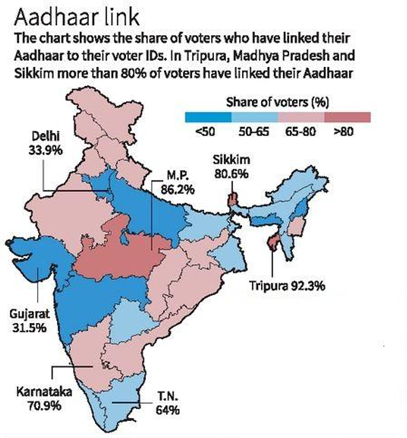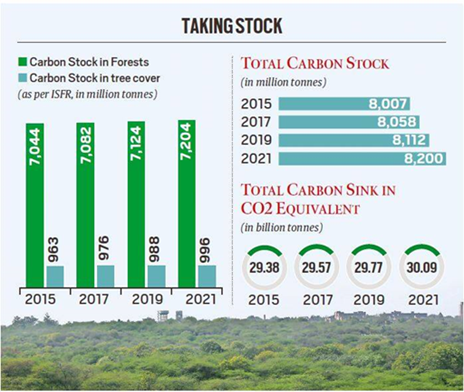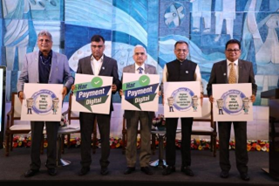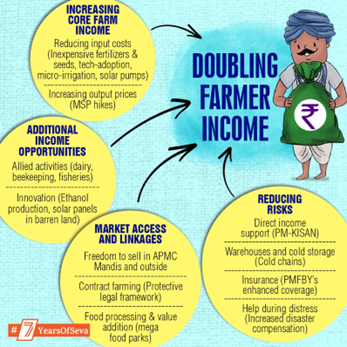Thursday, 9th March 2023
Women led digital solutions - Edukemy Current Affairs
Exam View: Digital divide, Statistics on Digital Disparity between genders, Women-led digital solutions in ensuring Nutrition, food security, and empowerment, Way forward
In News: The theme for International Women’s Day 2023 is ‘DigitALL: Innovation and Technology for Gender Equality.’ which focuses on the transformational and all-encompassing role of digital technology. However, the digital revolution also poses the challenge of leaving behind women, in the knowledge of digital skills and access to technologies.
Statistics on Digital Disparity between genders:
- According to a UNICEF report, around 90% of the jobs in the world today have digital components and in developing countries, only 41% of women have access to the internet compared with 53% of men. Thus creating inequality of opportunity.
- In Asia-Pacific, India has the widest gender gap of 40%. Less than 32% of women in India own a mobile phone compared to over 60% of men.
- Women generally have cheaper and unsophisticated handsets compared to those used by men, and their usage of digital services is limited to phone calls and text messages.
- The report also says that boys are 1.5 times more likely to own a mobile phone, and 1.8 times more likely to own a smartphone than girls.
- Data on use of the internet in India indicates that there are 58% of male internet users and only of 42% female users.

Women led digital solutions in ensuring Nutrition and Empowerment:
- Digital Training for PM POSHAN: Introduction of digital training and mobile tablets for the three million cook-cum-helpers, mostly women, who drive PM POSHAN can play a critical role in providing hot, cooked meals to millions of schoolchildren.
- Ensuring food and nutrition safety: Digital training could assist in ensuring nutritional improvement through the mid-day meals scheme and providing safe food which could end the vicious cycle of disease and malnutrition.
- FoSafMDM application was launched by Governments of Odisha and Rajasthan in collaboration with United Nations World Food Programme (WFP) to roll out technology-based training modules housed in an application, and mobile tablets for strengthening the capacity of the community in ensuring proper hygiene and safety measures.
- Women as nutrition champions: By bringing together access to a digital device, digital literacy, and community ownership for women, the initiative has infused fresh energy and confidence in women as nutrition champions.
Women led digital solutions in ensuring digital literacy and food security:
- Economic empowerment through digital literacy: Unleashing women’s economic power through digital literacy helps to lift millions out of poverty and food insecurity. This strengthens financial inclusion and creates potential new income streams.
- Supplementing family income by digital training: In a pilot on financial literacy and digital literacy being implemented by WFP with women SHGs across low-income groups in urban slums, nearly 70% of women wanted to acquire new skills and supplement family income.
- Independent and informed decisions on livelihood, food security and nutrition: Training of women would enable them to prioritise access to financial services, manage their own economic activities efficiently.
Way forward:
- Leveraging India’s demographic dividend requires an equal emphasis on the country’s gender dividend. Educated, economically productive, empowered and socially aware women and girls are highly valued in any society.

- The Prime Minister also emphasised the need for ‘women-led development’ as India took over the G20 presidency. Women20—the G20’s official engagement platform to promote gender equity—identifies “bridging the gender digital divide" as one of its five priorities that need to be mainstreamed as part of the G20 agenda this year.
Source:
https://www.thehindu.com/opinion/op-ed/the-importance-of-women-led-digital-solutions/article66591125.ece
Concerns with linking Aadhaar with Voter IDs
In News: Activists have flagged issues of possible disenfranchisement and privacy with Aadhaar linking to voter IDs where around 60% of India’s electors now have their Aadhaar number linked to their name on the voter rolls.
About Aadhaar Voter-ID linkage:

- In December 2021, Parliament passed the Election Laws (Amendment) Act, 2021 to amend the RPA, 1950 to insert section 23(4) which states that the electoral registration officer may “for the purpose of establishing the identity of any person” or “for the purposes of authentication of entries in electoral roll”, require them to furnish their Aadhaar numbers.
- Government notified changes to the Registration of Electors Rules, 1960 to give effect to the amendment. Rule 26B was added to provide that “every person whose name is listed in the roll may intimate his Aadhaar number to the registration officer”.
- The SC had restricted the mandatory use of Aadhaar to welfare schemes and PAN linking before enacting of Election law Act 2021. Form 6B, issued under the new Rule 26B, accepts other proofs of identity if a voter doesn’t have Aadhaar.
- However, NGO Swecha found through RTI that over 20 lakh voters were deleted from the rolls in Telangana following an Aadhaar-linking pilot exercise.
- Chief Electoral Officer (CEO) of 36 States and UTs have informed the voters that the linking is “voluntary” and “not compulsory”
What is the rationale behind the Aadhaar-Voter ID linkage?
- Weed out duplication: Usage of Aadhaar biometric facilities helps in weeding out duplication of voters, such as migrant workers, etc. who are registered to vote elsewhere, or registered in multiple places.
- Universal Coverage of Aadhaar: By 2021, 7% of the adult Indian population had an Aadhaar card. The coverage exceeds that of any other officially valid document such as a driver’s license, ration cards, PAN cards etc.
- Provision of Biometric Authentication: Since Aadhaar allows for biometric authentication, Aadhaar-based authentication and verification is considered more reliable, quicker, and cost efficient when compared to other IDs.
- De-duplication could improve the quality of constituency-wise voter information available to political parties and help them in launching targeted policies and welfare measures.
What are the concerns with the Aadhaar-Voter linkage?
- Privacy issues: Researchers warn that political micro-targeting could result in a loss of privacy and exposure to selective information, providing fertile ground for the Spread of mis- and dis-information and an increase in polarization.
- Profiling Concerns: There are allegations that the government would be able to use voter identity details for “profiling of the citizens”.
- High Error Rate: As per UIDAI in 2018, Aadhaar-based biometric authentication had a 12% error rate. Such levels of error rates could lead to the disenfranchisement of several eligible voters.
- Unavailability of alternate documents: There is a possibility that in certain tribal areas even the alternative documents if a voter does not produce Aadhaar, may not be available.
- Lack of data protection law: Civil society has highlighted that the linkage of Aadhaar’s “demographic” information with voter ID information may lead to a violation of the right to privacy and surveillance measures by the state.
Source:
https://www.thehindu.com/news/national/the-concerns-with-linking-aadhaar-with-voter-ids/article66567765.ece
Meeting India’s ‘carbon sink’ target
In News:
- India is committed to increasing its carbon sink by 2.5-3 billion tonnes of CO2 equivalent by 2030 however, it has not yet formally submitted the clarification to the UNFCCC about the baseline year.
- Increasing the carbon sink is a crucial part of mitigating climate change and ensuring a sustainable future through a combination of natural and artificial methods.
- In this regard, India's carbon sink target can be achieved by increasing forest and tree cover with the implementation of various central and state-sponsored schemes.
Key highlights:

- India’s carbon sink target requires creating an additional carbon sink of 2.5 to 3 billion tonnes of CO2 equivalent through additional forest and tree cover by 2030.
- The carbon sink target was left untouched in the updated international climate commitments announced by India in 2022.
- The carbon sink in the country had increased by 703 million tonnes of CO2 equivalent in the six years since 2015, which means the target is unlikely to be met by 2030.
- India’s original targets on emissions intensity and renewable capacity were quite modest, and thus easy to define precisely.
- There was ambiguity regarding the baseline year for the carbon sink target, and the word “additional” in the Indian commitment could be interpreted in different ways.
- The carbon sink target has become easy to achieve after the government committed to the baseline of 2005 in 2022.
What is Carbon Sink?
A carbon sink is a natural or artificial reservoir that absorbs and stores carbon dioxide from the atmosphere, thus reducing the amount of carbon dioxide in the atmosphere and mitigating the effects of climate change.
Different ways to increase the carbon sink:
- Afforestation: Planting new forests on land that was not previously forested, such as agricultural land or degraded land, can increase the carbon sink.
- Trees absorb carbon dioxide during photosynthesis and store it in their biomass and the soil.
- Reforestation: Restoring degraded or deforested land by planting trees can increase the carbon sink.
- This method is particularly effective if the restored land was previously forested and has the potential to quickly regain its previous carbon storage capacity.
- Forest management: Managing existing forests to maximize their carbon storage potential can increase the carbon sink.
- This can be achieved through selective logging, reducing forest fires, and improving forest health.
- Agroforestry: Introducing trees into agricultural landscapes can increase the carbon sink.
- Trees planted alongside crops or livestock can provide shade, improve soil health, and store carbon in their biomass and the soil.
- Blue carbon: Mangroves, seagrasses, and salt marshes are examples of coastal ecosystems that can act as carbon sinks.
- These ecosystems store large amounts of carbon in their soil, and their restoration and conservation can increase the carbon sink.
- Carbon capture and storage: This is an artificial method of increasing the carbon sink by capturing carbon dioxide emissions from industrial processes and storing them underground or in other long-term storage.
- Soil carbon sequestration: Improving soil health through sustainable farming practices such as reduced tillage, cover crops, and composting can increase the carbon sink.
- Carbon is stored in the soil as organic matter, improving soil fertility and reducing erosion.
Laws and regulations governing carbon sinks:
- United Nations Framework Convention on Climate Change (UNFCCC): The UNFCCC is an international environmental treaty aimed at reducing greenhouse gas concentrations in the atmosphere.
- The convention recognizes the importance of carbon sinks and encourages the development of afforestation and reforestation projects.
- Clean Air Act: The Clean Air Act is a US federal law that regulates air emissions from stationary and mobile sources.
- The act encourages the development of carbon sinks as a way to reduce greenhouse gas emissions and mitigate climate change.
- Kyoto Protocol: The Kyoto Protocol is an international treaty under the UNFCCC aimed at reducing greenhouse gas emissions.
- The protocol allows developed countries to use carbon sinks, such as forests, to offset their emissions.
- Regional policies: Many regional governments have developed policies and regulations to encourage the development of carbon sinks to help reduce greenhouse gas emissions.
- National policies: Many countries have developed policies and regulations aimed at reducing greenhouse gas emissions, which often include the development of carbon sinks.
https://indianexpress.com/article/explained/explained-climate/meeting-indias-carbon-sink-target-co2-emission-paris-climate-conference-8484854/#:~:text=The%20first%20interpretation%20of%20%E2%80%9Cadditional,billion%20tonnes%20of%20CO2%20equivalent
Glacial Retreat - Edukemy Current Affairs
In News: New research by the Wadia Institute of Himalayan Geology (WIHG) indicates that the Pensilungpa Glacier in Ladakh's Zanskar Valley is shrinking.
The study also found that change in debris cover plays a critical role in the glacier surface lowering, shrinkage, retreat, and mass balance. It also confirmed that the glacier retreat rate is controlled by climate change, glacier topography, and morphology.
About
- Glacial retreat is when glacial melt occurs faster than new seasonal snow and ice have time to accumulate.
- Glacier retreat often leaves lower valley-side slopes mantled in thick glaciogenic deposits, usually composed of stacked lateral moraines. Such deposits are vulnerable to erosion by slab failure, debris flow, snow avalanches, streamflow, and surface wash.
- Out of the total water on Earth, 2.1% is in glaciers while 97.2% is in the oceans and inland seas. 91% of the Glaciers are in Antarctica and 8% are in Greenland. They occupy about 10% of the world’s total land area.
Impact of Melting Glaciers
- Glacial Melting will cause global sea levels to rise, threatening already endangered species like the Snow Leopard and Tiger and dramatically changing the roof of the world.
- Melting Glaciers will increase river flows through the years 2050 to 2060, pushing up the risk of high-altitude lakes bursting their banks and engulfing communities.
- From the 2060s, river flows will go into decline. Lower flows will cut the power from Hydro dams that generate much of the Region’s electricity.

About Durung-Drung and Pensilungpa glaciers:
- Durung-Drung and Pensilungpa have retreated by 7. 8 sq km and 1. 5 sq km respectively between 1971 and 2019.
- Both glaciers feed important tributaries of the Zanskar river.
- Apart from climate change, glacier retreat is also influenced by topographic settings and morphology.
- The Pensilungpa Glacier (PG) in the Suru River and the Durung-Drung Glacier (DDG) in the Doda River basins of the Zanskar range are located in the Leh district of Ladakh.

https://pib.gov.in/PressReleaseIframePe.aspx?PRID=1904882
Special proteins to repair damaged heart cells
Why in news? A group of scientists, at the IIT, Guwahati, has come up with a solution where healthy skin cells from an adult can be converted into heart cells using special proteins.
About:
- According to scientists, converting cells from one form to another – k.a. cellular reprogramming – involves specific proteins, called transcription factors, that alter the “expression of genes within a cell and direct it to take on a new cellular identity”.
- They developed a toolbox, which consists of six recombinant proteins: GATA4, MEF2C, TBX5, ETS2, MESP1, and HAND2.

- Each of these proteins plays a significant role in reprogramming fibroblasts – a type of cells that provides structure to tissue – into cardiomyocytes.
- The advantage of recombinant proteins-based cell conversion is they work their miracle inside the nucleus and eventually disappear over time without leaving behind their toxic waste, unlike their genetic counterparts.
- Thus, they are very safe for reprogramming compared to other approaches.
https://www.thehindu.com/sci-tech/science/iit-guwahati-scientists-use-proteins-to-repair-damaged-heart-cells/article66576335.ece#:~:text=Now%2C%20a%20group%20of%20scientists,heart%20cells%20using%20special%20proteins
Medium Range Surface-to-Air Missile (MRSAM) and BrahMos
Why in news? Recently, the Indian Navy successfully test-fired the ship-launched version of BrahMos supersonic missile with an indigenous seeker and booster in the Arabian Sea.
About MRSAM:
- MRSAM weapon system which is also called the ‘Abhra’ Weapon System is a state-of-the-art medium-range air defence weapon system.
- It is a joint venture of DRDO and Israeli Aerospace Industries (IAI) and produced at Bharat Dynamics Limited (BDL).
- It is designed to destroy hostile aircraft, helicopters cruise missiles and drones at a 70km range.

About BrahMos:
- It is a joint venture of India and Russia and it’s named after the rivers Brahmaputra and Moskva.
- BrahMos is a medium-range ramjet supersonic cruise missile (two-stage missile —Solid+ Liquid propellant) that can be launched from a submarine, ship, aircraft, or land having a range of 450 km.
- It can works in both day and night irrespective of the weather conditions.
- It operates on Fire and Forgets principle.
https://indianexpress.com/article/india/navy-test-fires-brahmos-missile-ship-launched-version-8480862/#:~:text=The%20anti%2Dship%20version%20of,Command%20in%20April%20last%20year.&text=The%20Navy%20successfully%20test%2Dfired,the%20Arabian%20Sea%20on%20Sunday
3-year approval to nano-DAP - Edukemy Current Affairs
Why in news? Ministry of Agriculture has allowed IFFCO and Coromandel International (a private company) to start production of nano-DAP (Di-Ammonia Phosphate) for three years.

About nano liquid DAP fertilizer:
- It is a concentrated phosphate-based fertilizer.
- It provides phosphorous nutrition throughout the crop growth and development cycle.
- Nano-DAP is jointly manufactured by Indian Farmers Fertiliser Cooperative (IFFCO) in association with a private player Coromandel.
- Expected benefits:
- DAP is the second most consumed fertilizer in the country after urea.
- Out of the estimated annual consumption of around 10-12.5 million tonnes, local production is around 4-5 million tonnes, while the rest has to be imported.
- Nano-DAP will help to bring down India’s fertilizer import bill.
https://economictimes.indiatimes.com/industry/indl-goods/svs/chem-/-fertilisers/nano-dap-included-in-fertilizer-control-order-how-will-it-impact-the-cost-of-procurement/videoshow/98458031.cms
Har Payment Digital Mission - Edukemy Current Affairs
Why in news? Recently, RBI has launched the ‘Har Payment Digital’ mission during Digital Payments Awareness Week (DPAW) 2023.

About:
- The Har Payment Digital campaign by RBI aims at reinforcing the ease and convenience of digital payments and facilitate onboarding of new consumers into the digital fold.
- Under the mission Payment System Operators (PSOs) will adopt 75 villages across the country and conduct camps in each of these villages with an aim to improve awareness and onboard merchants for digital payments.
- PSOs are entities (currently there are 67 PSOs e.g., NPCI) authorised by RBI to set up and operate a payment system.
https://newsonair.gov.in/News?title=RBI-launches-Mission-%E2%80%98Har-Payment-Digital%E2%80%99-on-the-occasion-of-Digital-Payments-Awareness-Week-20
One Nation One Challan - Edukemy Current Affairs
Why in news? The Gujarat government is in the process of setting up virtual traffic courts in the state under the One Nation, One Challan initiative.

About:
- One Nation, One Challan is an initiative of the Ministry of Road Transport and Highways.
- It aims to bring all related agencies, such as the traffic police and the Regional Transport Office (RTO), on one platform, to enable the seamless collection of challans as well as data transfer.
- The integrated system involves the detection of traffic violations through the CCTV network and getting the registration number of the erring vehicle from applications like VAHAN (detecting the vehicle’s ownership details) and SARATHI (compilation of driving licenses).
- An e-challan is then generated with the relevant penalty amount and sent to the mobile number linked with the vehicle.
- If someone doesn’t pay the challan amount within 90 days, the challan will be automatically forwarded to a virtual court and proceedings will be initiated.
https://indianexpress.com/article/explained/everyday-explainers/what-one-nation-one-challan-initiative-gujarat-virtual-courts-8479539/lite/
Real Estate Regulatory Authority (RERA)
Why in news? Recently, SWAMIH Investment Fund I has raised Rs 15,530 crore to provide priority debt financing for Real Estate Regulatory Authority (RERA)-registered residential projects that fall in the affordable, mid-income housing category.
About:
- Real Estate (Regulation and Development) Act (RERA) is an act passed by the Parliament in 2016 that came into effect fully from 1st May, 2017.
- It seeks to protect home-buyers as well as help boost investments in the real estate sector by bringing efficiency and transparency in the sale/purchase of the real estate.
- The Act establishes Real Estate Regulatory Authority (RERA) in each state for regulation of the real estate sector and also acts as an adjudicating body for speedy dispute resolution.
Objectives of RERA
- Enhance transparency and accountability in real estate and housing transactions.
- Boost domestic and foreign investment in the real estate sector.
- Provide a uniform regulatory environment to ensure speedy adjudication of disputes.
- Promote orderly growth through efficient project execution and standardization.
- Offer a single window system of clearance for real estate projects.
- Empower and protect the right of home buyers.
https://indianexpress.com/article/explained/explained-economics/swamih-investment-fund-affordable-housing-explained-8480560/
Share the article
Get Latest Updates on Offers, Event dates, and free Mentorship sessions.

Get in touch with our Expert Academic Counsellors 👋
FAQs
UPSC Daily Current Affairs focuses on learning current events on a daily basis. An aspirant needs to study regular and updated information about current events, news, and relevant topics that are important for UPSC aspirants. It covers national and international affairs, government policies, socio-economic issues, science and technology advancements, and more.
UPSC Daily Current Affairs provides aspirants with a concise and comprehensive overview of the latest happenings and developments across various fields. It helps aspirants stay updated with current affairs and provides them with valuable insights and analysis, which are essential for answering questions in the UPSC examinations. It enhances their knowledge, analytical skills, and ability to connect current affairs with the UPSC syllabus.
UPSC Daily Current Affairs covers a wide range of topics, including politics, economics, science and technology, environment, social issues, governance, international relations, and more. It offers news summaries, in-depth analyses, editorials, opinion pieces, and relevant study materials. It also provides practice questions and quizzes to help aspirants test their understanding of current affairs.
Edukemy's UPSC Daily Current Affairs can be accessed through:
- UPSC Daily Current Affairs can be accessed through Current Affairs tab at the top of the Main Page of Edukemy.
- Edukemy Mobile app: The Daily Current Affairs can also be access through Edukemy Mobile App.
- Social media: Follow Edukemy’s official social media accounts or pages that provide UPSC Daily Current Affairs updates, including Facebook, Twitter, or Telegram channels.



